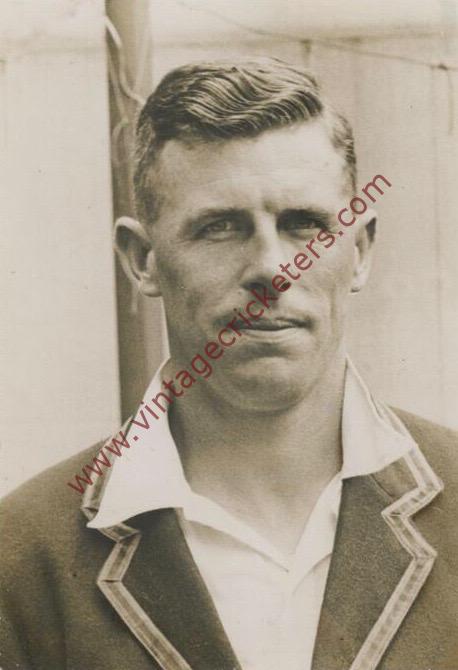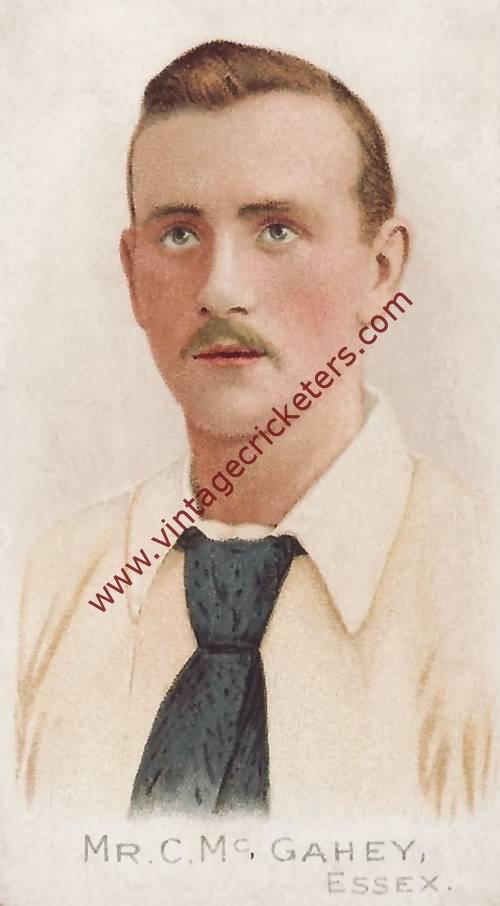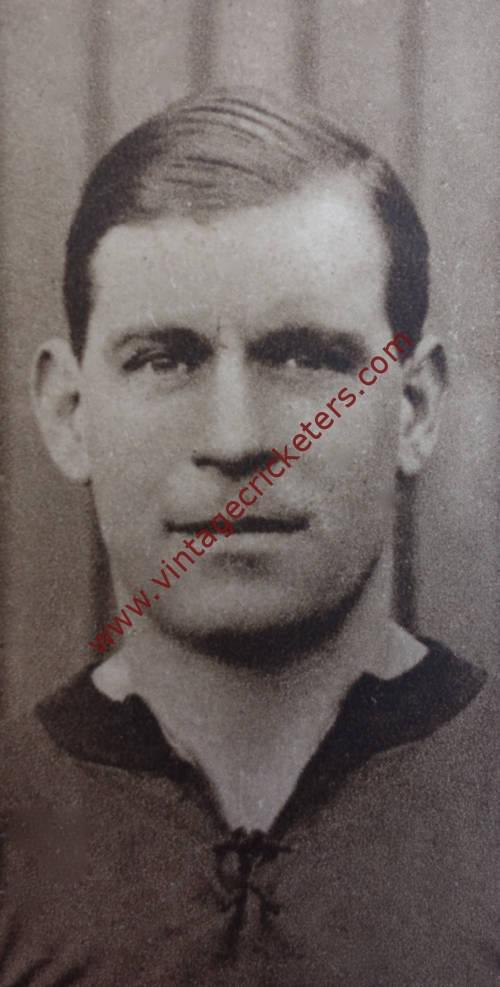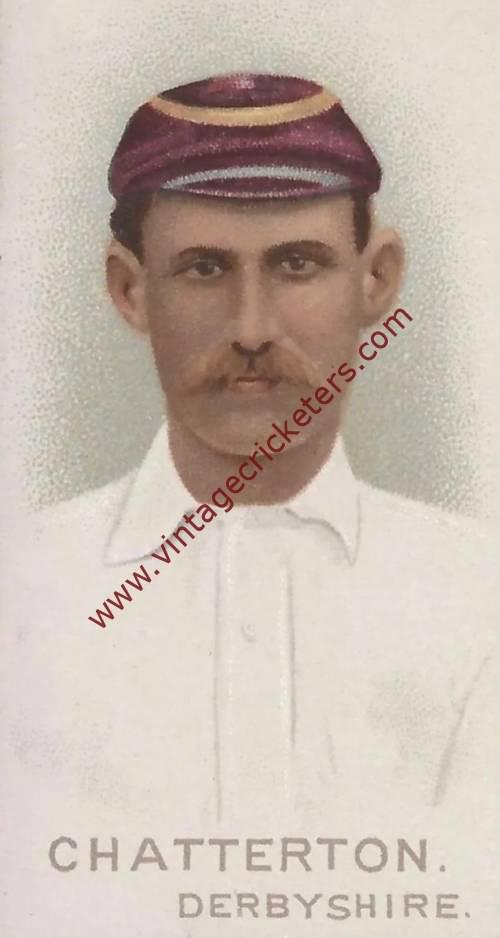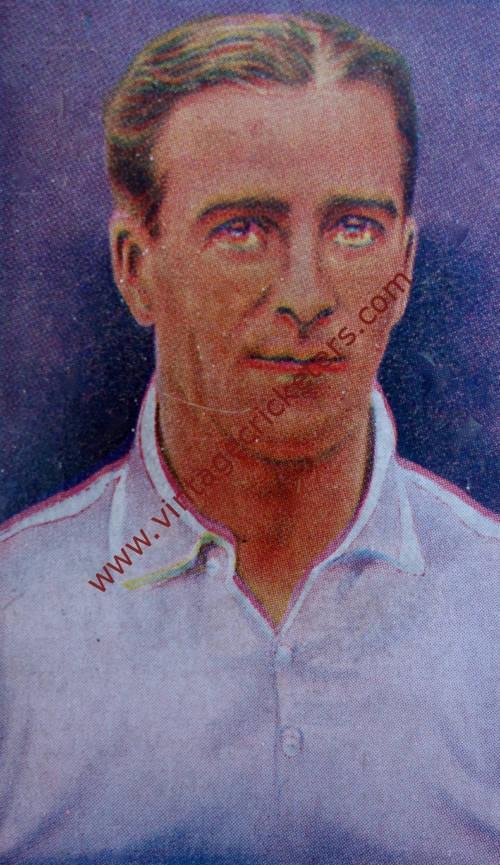Long Eaton, Derbyshire born all-rounder Leslie Townsend first played for his native county Derbyshire in the 1922 season and obtained a regular place in the 1924 season. A right-handed middle order batsman and right-arm medium pace off-break bowler, Townsend scored over 800 runs at an average of 18 in the 1925 season. These modest figures, with 59 as his best score, placed Townsend fourth in the County’s averages. In the 1926 season after a very slow start Townsend developed as a bowler in August on a number of treacherous pitches. He took 6-32 against Nottinghamshire at Ilkeston and 9-36 for two innings against Northamptonshire at Chesterfield, a sign that he would become probably the most deadly bowler on a sticky wicket Derbyshire ever produced, owing to his perfect length and ability to turn the ball back from the off.
In the 1927 season, with Derbyshire rising to fifth in the Championship, Townsend’s medium pace off-break bowling was close to the top of the averages. He took 5-29 on a sticky wicket against the formidable Lancashire side and 5-42 against Warwickshire. In the 1928 season, his deadliness on sticky wickets was so pronounced he topped the County bowling table with 101 wickets, including 13 against Sussex, and his batting developed so much he edged past 1,000 runs with a best score of 98. In the 1929 season, despite only one 5 wicket return, he again managed 100 wickets. He was chosen for a second-string tour of the West Indies, making his Test match debut at Georgetown in February 1930, but did nothing of note.
The 1930’s saw Townsend’s batting bloom due to improved technique. Having not scored a century before the 1930 season, he hit four alone this year, and after a decline in the 1931 season, did even better as a batsman in the 1932 season. At the same, time, so deadly was his bowling on the many sticky wickets than he was in the top ten of the 1931 national bowling averages and took 117 wickets in 1932. In the 1933 season, Townsend’s batting was so successful that he scored over 2,000 runs, including a career high innings of 233 against Leicestershire at Loughborough, 172 not out against Warwickshire at Derby, and 151 against Essex at Leyton. He took 100 wickets for 18.71 each and was second only to Hedley Verity in deadliness on the sticky wickets of May and June. His best match performances were 9-82 against Somerset at Ilkeston, 10-54 against Hampshire at Portsmouth and 14-90 against Gloucestershire at Chesterfield. However, his limitations on the hard pitches in July and August meant he only reached the rare “double” of 2,000 runs and 100 wickets in the last match. Nonetheless, he was named as a Cricketer of the Year by Wisden and toured India, playing three further Test matches, though again meeting with little success, his best score with the bat being 40 at Calcutta in January 1934.
In the following three years, as Derbyshire attained the greatest heights they ever have in the County Championship. Townsend’s bowling declined steadily. By the 1935 season he was rarely given substantial spells of bowling but still could do well on a sticky pitch, as at Edgbaston in the 1936 season when he took 12 Warwickshire wickets. Along with Dennis Smith he was the indispensable backbone of the batting, which was that year still very weak for a champion County. His best score that year was 182 not out against Sussex at Chesterfield. Townsend played a season with Auckland in 1934-1935, and after his batting declined so badly in 1939 that he scored fewer than 700 runs for an average of only 19,
In 493 first class matches Townsend scored 22 centuries and 102 fifties, averaging 27.50 from 19,555 runs scored. He claimed 1,088 wickets at 21.12 apiece, with a best performance of 8-26, taking ten wickets in a match on 16 occasions and five wickets in an innings 51 times. He also took 241 catches in first class play.
Townsend settled in New Zealand permanently, and he became the driving force behind the development of cricket in the Nelson district of the South Island. Nelson held the Hawke Cup for 28 defences from 1958 to 1965. Most observers during his later years as a coach there saw Townsend as the reason why the city produced an unusual proportion of New Zealand’s Test cricketers in the latter part of the twentieth century.

